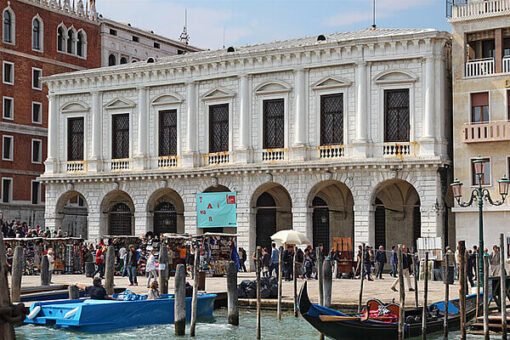The Palazzo delle Prigioni Nuove is thus defined in reference to the “old” detention space that is very close: not a real prison but a series of spaces in the Doge’s Palace used as cells. One was located right under the roof and are the cells known as “Piombi” as the roof was covered with the same material, making them very cold in winter and very hot in summer. The other space is located on the opposite side, on the surface of the water and it is a row of cells called “Pozzi” because, with the rising of the tide (and therefore with the phenomenon of acqua alta), they ended up filling up of water. In these prisons, the conditions of the prisoners could only be very harsh but in reality, the first problem that was taken into consideration was the space. These were overcrowded cells and for this reason, the decision was made to start the construction of a special building for detention, hence the definition of “New Prisons”. Construction began in 1564 and ended in 1615.
The fact that it was a high-level project or rather an institutional project wanted by the authorities of the Republic, is evident from various characteristics. Two should be noted: the first is the absolutely central position, near the Doge’s Palace connected by the Bridge of Sighs (and here it is clarified “Even if this visit does not include the passage of the Bridge and later during the visit we will clarify the reason “), and finally the imposing mass of the building, emphasized by the choice of building material. It is Istrian stone, widely used in Venice (the Bridge of Sighs itself), appreciated for its characteristics of solidity, heaviness, and insulation – both from humidity and from fire, and it is no coincidence that the Prisons are the best-preserved building in the city as the fire never got the upper hand.






